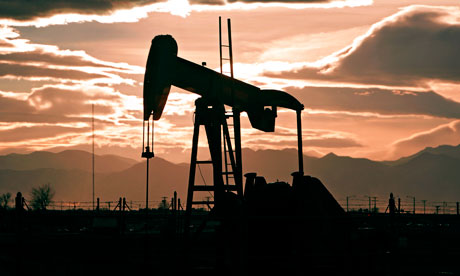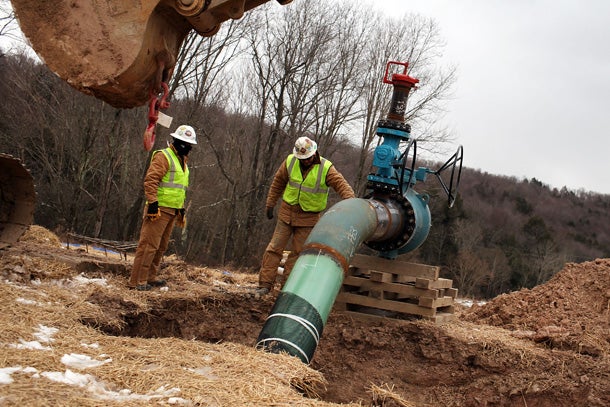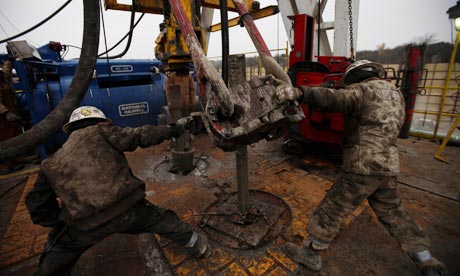This New York Times article reports how Solazyme, the leading renewable oil and bioproducts company, started on using algae to produce oils and biomaterials in standard fermentation.
STARTING when they became friends in freshman year at Emory University in Atlanta, Jonathan S. Wolfson and Harrison F. Dillon would take off into the mountains of Wyoming and Colorado for weeks at time. They spent their days hiking in the wilderness and their nights drinking bourbon by the campfire, talking big about how one day they would build a company that would help preserve the environment they both loved.
They graduated, and the backpacking trips grew shorter and further between. Mr. Dillon went on to earn a Ph.D. in genetics and a law degree, and ended up working as a biotech patent lawyer in Silicon Valley. Mr. Wolfson received law and business degrees from New York University and eventually started a software business. But the two still got together every year. And they kept talking about the company that, they imagined as time went on, would use biotechnology to create renewable energy.
“These were delusional rantings of kids,” said Mr. Wolfson, who, like Mr. Dillon, is now 42.
Then Mr. Dillon found microalgae, and delusional became real. Microalgae, a large and diverse group of single-celled plants, produce a variety of substances, including oils, and are thought to be responsible for most of the fossilized oil deposits in the earth. These, it seemed, were micro-organisms with potential. With prodding, they could be re-engineered to make fuel.
So in 2003, Mr. Wolfson packed up and moved from New York to Palo Alto, Calif., where Mr. Dillon lived. They started a company called Solazyme. In mythical Valley tradition, they worked in Mr. Dillon’s garage, growing algae in test tubes. And they found a small knot of investors attracted by the prospect of compressing a multimillion-year process into a matter of days.
Now, a decade later, they have released into the marketplace their very first algae-derived oil produced at a commercial scale. Yet the destination for this oil — pale, odorless and dispensed from a small matte-gold bottle with an eyedropper — is not gas tanks, but the faces of women worried about their aging skin.
Sold under the brand name Algenist, the product, costing $79 for a one-ounce bottle, would seem to have nothing in common with oil refineries and transportation fuel. But along with other niche products that the company can sell at a premium, it may be just the thing that lets Solazyme coast past the point where so many other clean-tech companies have run out of gas: the so-called Valley of Death, where young businesses stall trying to shift to commercial-scale production.
For years, policy makers, environmentalists and entrepreneurs have trumpeted the promise of harnessing the power of the sun, wind, waves, municipal solid waste or, now, algae. There has been some success. Since 2007, United States energy consumption from renewable sources has grown nearly 35 percent, and now accounts for about 9 percent of the total, according to the Energy Information Administration.
But the gains have been punctuated with prominent failures. Once-promising clean-tech ventures that attracted hundreds of millions in federal support — like the solar panel maker Solyndra, the cellulosic ethanol maker Range Fuels and the battery supplier A123 Systems — have failed. While ethanol, derived from crops like corn and sugar cane, has become a multibillion-dollar industry, it threatens to drive up the price of those plants for food and cannot yet replace conventional fuel. The next generation of biofuels, based on nonfood plants, is still struggling to take off.
Venture capital, which once gushed to renewable-energy start-ups like crude from an oil well, has slowed. In contrast to software-based companies like Instagram or Facebook, these new energy businesses burn through staggering amounts of capital over many years for research and early-stage equipment before even demonstrating their promise, much less turning a profit. Worldwide in 2012, venture capital investing in clean technologies fell by almost one-fourth, to $7.4 billion, from $9.61 billion in 2011, according to the Cleantech Group’s i3 Platform, a proprietary database.
“These are very high-innovation, capital-intensive, long-term businesses, and new-energy technology is a very new field,” said David Danielson, a former venture capitalist who is assistant secretary for energy efficiency and renewable energy at the Energy Department. “We need a new model for how these projects are going to get financed and commercialized.”
In other words, clean-energy companies can’t rely only on the classic venture-capital approach in which investors demand a fat, fast return. Mr. Danielson said that to succeed, companies need a combination of government research-and-development grants, industrial partnerships and a willingness to pursue higher-value product lines en route to entering larger, but lower-margin markets.
“The problem with a lot of clean-tech deals is that they have been about the way you make things in high volume or in production, which means you can’t prove out the ideas unless you build factories and actually make things in volume,” said Andrew S. Rappaport, a venture capitalist who is a board member of Alta Devices, a solar film start-up.
That company is one of a handful that, like Solazyme, is pursuing niche markets for its core product, in its instance developing fast-charging cases for smartphones and tablets, until it can produce low-cost, commercial quantities of solar materials for homes and businesses. A Bay Area start-up called Amyris, meanwhile, has shifted its genetically engineered yeast toward chemicals and cosmetic ingredients as it tries to build a biofuel business.
For Solazyme, the hope is that by manipulating strains of algae to make proteins, complex sugars and oils that can serve a variety of functions — like moisturizing skin or replacing eggs and butter in brioches — it will stay afloat as it struggles to reach the next stage. And that next step is making huge quantities of renewable energy products at a price that can compete with fossil fuels.
One obvious question is whether this strategy will work. Another is, will it work too well?
SOLAZYME’S story — which is far from done — shows just how circuitous the road to creating profitable energy technologies can be.
By the time Mr. Dillon and Mr. Wolfson began their company in 2003, researchers had mapped the genome of algae, a feat that started the partners on their quest to redesign the plants’ genetic codes to produce valuable commodities. In addition to oils, algae naturally produce other substances, including hydrogen and oxygen. At first, Mr. Dillon and Mr. Wolfson considered focusing on hydrogen because it seemed that carmakers would be designing hydrogen-powered vehicles. But they soon dismissed that approach because the economic and technical challenges of capturing, storing and transporting hydrogen proved insurmountable — and the vehicles never took off.
The Solazyme partners realized they needed to make a product that could use existing equipment and infrastructure — so-called drop-in fuels that wouldn’t require car or aircraft manufacturers to make new engines or fuel refiners to use new equipment. Fuel oil seemed the best bet, and they set about trying to unlock the mechanisms that the plants use to make it.
The problem with producing fuel oil is that volume is king. Oil producers generally make only a few dollars on each barrel they sell, so they make enormous profits only by selling billions of barrels. It didn’t matter if Solazyme made a terrific, carbon-neutral product — or if it made it ingeniously. If it couldn’t make enough, the business would never fly.
Nowhere in the clean-tech sector is the conundrum of scaling up more evident than in biofuel. Cellulosic fuel may finally be close to achieving real scale: the Energy Department, which has sometimes been overly optimistic in the past, predicts that there will be 80 million gallons in commercial production by 2015, and at least one company, KiOR, has begun shipping cost-competitive cellulosic biofuel to American customers, with others expected to follow soon. But the Energy Department is supporting research on using organisms like yeast and bacteria to make fuels that can directly replace conventional gasoline, and does not expect them to hit commercial scale until 2017. Those using algae will take even longer, until 2022, energy officials predict.
At Solazyme, the partners’ early realization of the challenge spurred them to step up testing. They poked and nudged the algae, trying to produce something that mimicked existing fuel oil. They also re-engineered the microorganisms to see what else could come out.
“The point was still a straight line to fuels, but it started to be clear how long this was going to take,” Mr. Wolfson said, describing the company’s rapid evolution toward developing multiple product lines. “This was going to be longer and harder than all of our discussions about starting a company.”
The big discovery was that algae, depending on the strain, could make oils that, biochemically, looked a lot like others found in nature or already in use in the marketplace. And industries like cosmetics, food and petrochemicals would pay more for each gallon, or milliliter, of output. All of the oils in question, whether destined to become gear lubricants or salad dressings, have a similar molecular backbone. But properties like melt point, saturation level or energy storage could be manipulated by adding or subtracting carbon atoms or controlling the location and connection of fatty acids and hydrogen atoms.
But there was a catch: the partners had sold investors on an energy business, not one that made cosmetics, nutritional supplements and soap. They had also told their board that they would be able to make fuel through photosynthesis, a process then considered “sexy,” Mr. Wolfson said. That’s because the sunlight that would fuel the algae’s growth was free; other methods of goosing the algae included adding food sources like sugar. But growing algae where they could get enough sunlight required huge ponds of water and the risk of plant loss.
After several late-night conversations and scrambling to come up with an alternative plan, Mr. Wolfson and Mr. Dillon met with the board in a tiny conference room near the entrance to their Menlo Park lab and offered a new plan. They would grow algae in tanks in the dark in a process called heterotrophic fermentation to make the specialty oils for ancillary markets that would pave the long road to fuel.
They were worried the board might desert them, Mr. Dillon said, but their main backers, Jerry Fiddler, an angel investor who is still the board chairman, and Dan Miller and Roger Strauch of the Roda Group, the company’s largest investor, went along. The three, who had already invested roughly a combined $1.3 million, agreed on the spot to finance further testing of the idea.
Not everyone agreed with the change. Several board members eventually left, and several established venture capitalists who had been interested in leading rounds of financing refused to do so because the founders insisted on pursuing multiple markets, Mr. Wolfson said.
“It’s very true that if you try to do too many things and you don’t focus as a company, you’ll fail — focus actually does matter,” Mr. Wolfson said. “That’s portfolio theory for them. ‘I’m making a bet on you on fuel; I want you to focus on that.’ What they didn’t really understand is our platform is a focused platform to produce oils.”
IT has taken several years of experimenting — starting in a lab with equipment bought on eBay and repaired by Mr. Fiddler — to develop that platform.
The team genetically engineers the microbes to produce oils with the different properties that a customer might want. One might be an oil that doesn’t explode in a transformer. Another might be a fat with the mouth feel of cocoa butter in chocolate, or something that mimics palm kernel oil to go into soap. Starting with a one-milliliter vial, technicians make the algae multiply by suspending them in a broth rich in sugar and other nutrients, moving them into progressively larger vats until they reach the desired volume, anywhere from five to 600,000 liters.
The scientists then deprive the algae of nitrogen, which halts their division. Under this stress, they begin to produce oil, a protective response. The oil swells their tiny cells, up to 85 percent of their mass, in a kind of microscopic version of producing foie gras.
“It’s not a very healthy cell” at the end of the process, said Peter J. Licari, Solazyme’s chief technology officer. But the process could be one of the company’s competitive advantages over other approaches. In open-pond growth, for instance, the cells often yield no more than 15 percent oil, Mr. Licari said.
The resulting liquid is then fed through a series of tanks, rollers and other equipment that squeeze out the oil, leaving behind a mass that is mostly cell walls. No matter the oil, the process varies little, Mr. Licari said, and is easily adapted to make the complex sugars — polysaccharides — that went into the original Algenist skin care line.
The company has a multiyear agreement with Mitsui, the Japanese conglomerate, to tailor oils for chemical and industrial markets. In a joint venture with Solazyme, the Brazilian agricultural and food giant Bunge is building a plant next to its sugar cane refinery in south central Brazil; it will use the sugar to feed the algae, which it expects to make up to 30 million gallons a year of oil for soaps and other products. Solazyme also has an agreement to develop oils for Unilever to be used in soap, personal care and nutritional products.
On the cosmetics side, the Algenist line has been a hit at Sephora and QVC, where executives say customers are particularly attracted to the story of an accidental discovery by lab scientists working on green energy.
“We continue to tell this alternative story about this very interesting ingredient that’s come from a very unlikely source in the world of skin care,” said Claudia Lucas, director of beauty merchandising at QVC.
Solazyme executives say they will get to the fuel business eventually. By producing algae-derived oils at a commercial scale at a reasonable price, they hope to entice established companies to invest in plants and equipment so that the fuel can work as a volume business. But for now the focus is on the higher-value markets.
“The higher returns we can show out of each plant to start out with, the faster we can get plants financed and built,” Mr. Wolfson said. The company expects to charge roughly 30 percent more for its fuels and chemicals than they cost to make, and 40 percent more for its nutritional products. But it can get 60 percent more for the cosmetic oils.
Whether the company can build a profitable business is an open question. Analysts say it has amassed an impressive list of industrial partners and investors — including Chevron — but its operating figures suggest there is still more promise than delivery.
Last year, the company had a net loss of $83 million on $44 million in sales. Its stock price is $12.62, well below its initial public offering price of $18 a share in 2011 and its high of about $26. Like many renewable-energy ventures, Solazyme has relied on government income — it used to supply the military with small amounts of expensive diesel — but in the first quarter this year, revenue for research programs dropped, driven by a decline in government grants. It is also taking on debt, adding roughly $185 million earlier this year.
EVEN so, analysts are generally bullish about the company’s prospects, despite some who express skepticism that Solazyme will ever develop the fuels.
“Fuels is still an opportunity for them,” said Rob Stone, a research analyst who tracks clean tech at Cowen & Company. He added that because the new, commercial-scale manufacturing capacity could be used entirely to satisfy demand in the higher-value markets, it might not make sense for Solazyme to use up its production space to make lower-margin fuels. “I think they could make a very large company without ever doing much at all in the fuel business,” he said.
It is a point that Mr. Wolfson comes close to conceding, saying that the entry to commercial fuel production is years away, and even then might be in making fuel additives rather than the drop-ins they have been pursuing. That possibility doesn’t seem to bother anyone around the office.
Executives seem almost more excited about their ventures into nutrition, making low-saturated fats and oils without transfats. A visit to the company’s headquarters in South San Francisco included a multicourse lunch highlighting Almagine, a powdered fat and protein supplement meant to replace eggs and saturated fats. Solazyme is developing it through a partnership with Roquette, a starch processor. Included in the tasting were salad dressings, Alfredo sauce for pasta, brioches, shortbread cookies and ice cream, all with lower saturated fat and calories and higher protein contents than standard versions.
It’s a far cry from the campfire rantings of two college friends out to save the environment. But now they have a new crusade. "I think the difference that this company will make in food alone will be enormous," Mr. Dillon said. Or, as Mr. Fiddler put it: “Even if we never succeed in energy, food is hugely valuable and hugely beneficial to the world.”
Dr. Ali Ghalambor is the former Director of the Society of Petroleum Engineers. Visit this blog site to find out more.




















